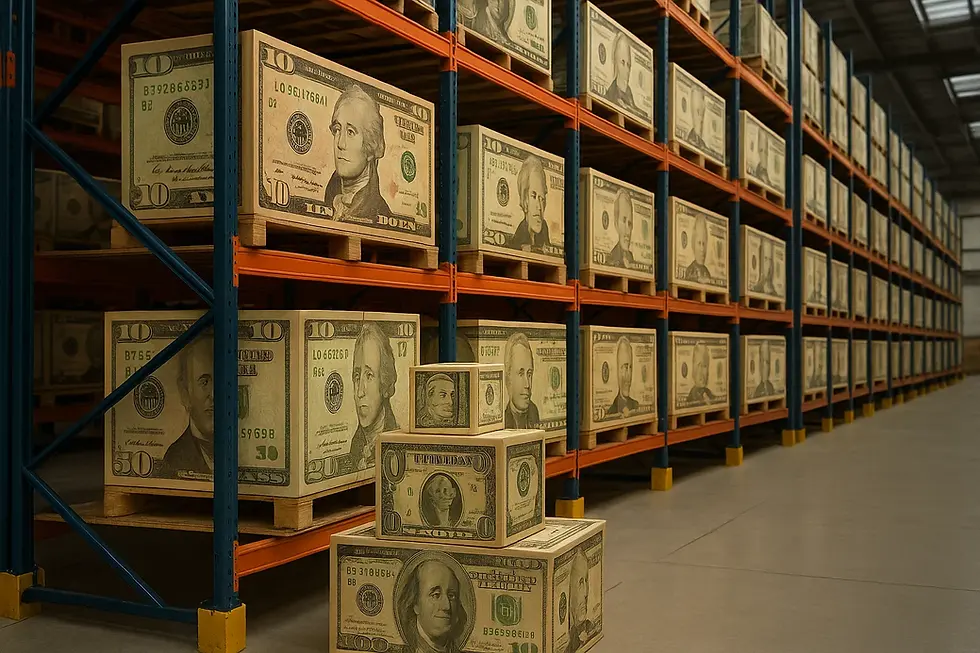Forecasting Isn't Magic: It's Method, Math, and Experience
- Brandon Tarver

- Aug 26
- 3 min read
Many small business owners treat forecasting as guesswork, or worse, as something that only large corporations can do well. In truth, good forecasting is neither mysterious nor difficult. What it requires is structure, discipline, and the right mix of tools and human judgment.
Every reliable forecast is built on three essential components:
Historical data from a consistent and accurate source
Statistical tools that process that data into patterns
Expert refinement that applies experience and context
That’s all forecasting really is: organized learning from your own history, filtered through math and improved by experience.
1. Historical Data: The Foundation of Every Forecast
Accurate forecasting starts with clean, reliable data. If your sales history is inaccurate, incomplete, or distorted by anomalies that were never recorded, every calculation built on it will be flawed.
Your data should reflect real transactions: what was sold, when, in what quantity, and at what price. It should come directly from your accounting, ERP, or point-of-sale system. When you rely on estimates or disconnected spreadsheets, you’re not forecasting. You’re guessing.
2. Statistical Tools: Turning History Into Insight
Forecasting models are simply mathematical rules that look for patterns in your historical data and project those patterns into the future.
Common statistical methods include:
Moving averages, which smooth out short-term spikes by averaging recent periods.
Linear regression, which identifies upward or downward trends over time.
Exponential smoothing, which assigns greater weight to recent periods on the assumption that they represent current conditions more accurately.
Blended models, which combine approaches to handle more complex or seasonal demand patterns.
Many companies use spreadsheet-based models in Excel or Google Sheets. Others use built-in forecasting modules in ERP systems such as NetSuite, SAP Business One, or Microsoft Dynamics. Specialized tools like Forecast Pro, Demand Works Smoothie, or Anaplan are also common.
All of these tools serve the same purpose: to transform raw data into a statistically valid projection. What matters most is that the method reflects how your business actually behaves.
If your algorithm assumes an annual life cycle, but your product line has a three-year life cycle, your forecast will be consistently wrong. The model must match your true demand pattern, or it becomes noise.
3. Expert Refinement: The Human Element
Even the best algorithms are blind to what is happening outside the data. Human refinement is where forecasting becomes decision-making.
A skilled planner, operations manager, or finance lead reviews the statistical output and applies judgment based on real-world conditions. For example:
A new product launch that will shift demand away from an older SKU
A supply chain delay that will temporarily reduce available inventory
A promotion or marketing campaign that will increase short-term sales
Seasonality or regional variation that math alone cannot detect
The forecast is not complete until someone who understands the business adjusts it for what the numbers cannot yet know.
That step is what turns a model into a management tool.
4. Why Forecasting Matters
A forecast is not just about predicting sales. It is a planning mechanism that aligns capital, operations, and people.
Your forecast determines:
How much inventory you buy and when
How much cash you need to support operations
How you schedule labor and production
How confidently you can make pricing or purchasing decisions
Poor forecasting leads directly to overstocked warehouses, cash shortages, and missed opportunities. Every forecasting error eventually shows up on the balance sheet, either as excess inventory or as lost sales.
5. Building a Forecast That Works
Good forecasting requires four things:
Clean, truthful data
A mathematical model that fits your product and market
Human insight that interprets the results
Consistency in applying and reviewing the process
With these in place, a small business can forecast just as effectively as a large one, often with better agility and faster decisions.
Final Thought
Forecasting is not about predicting the future. It is about preparing for it.It gives business owners the ability to make decisions based on evidence rather than instinct, and to manage cash and inventory with precision instead of reaction.
At Tarver Associates, we help small and family-owned businesses design forecasting processes that fit their operations, select and configure the right tools, and train their teams to manage demand with confidence.
Whether you need to build your first reliable forecast or refine one that already exists, we can help you turn data into strategy and uncertainty into clarity.

Comments